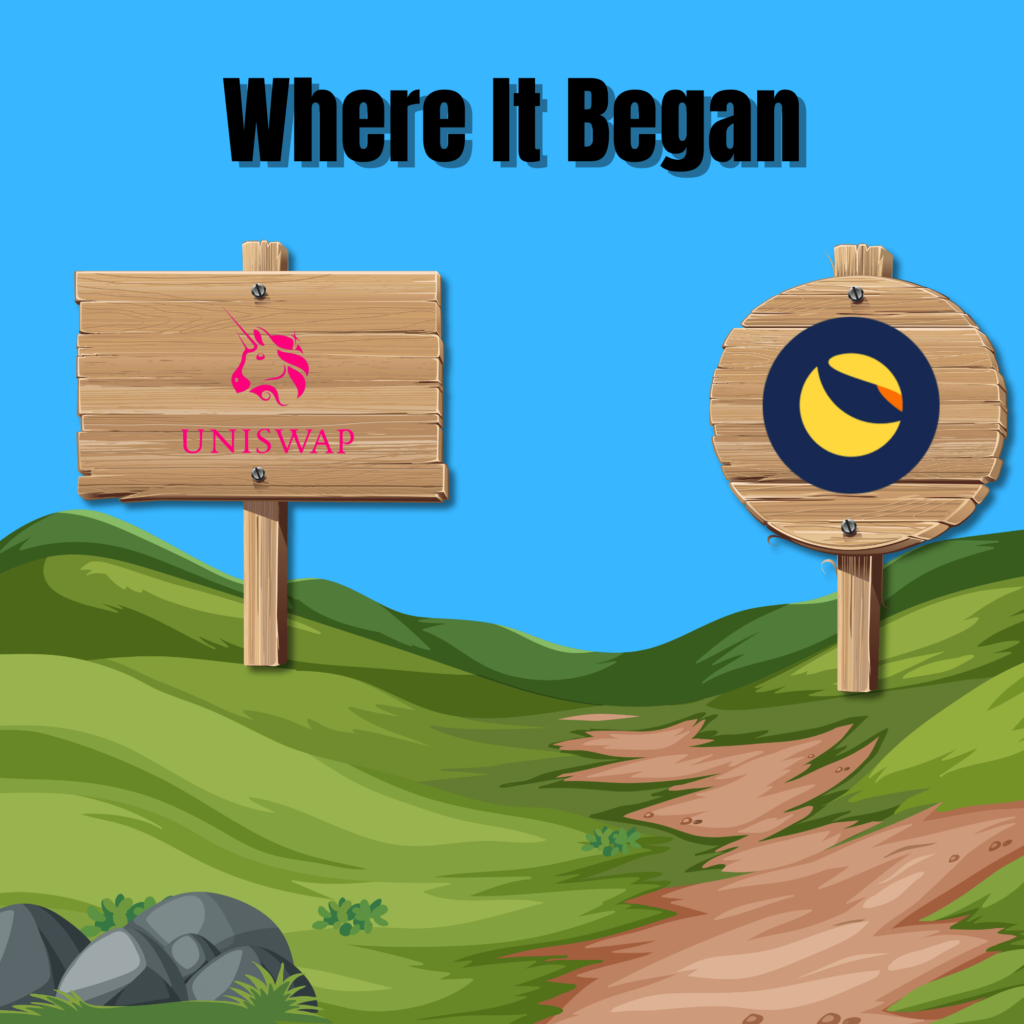In the dynamic world of cryptocurrency, a new chapter is unfolding. This chapter promises to redefine the landscape of decentralized finance (DeFi). The movement aims to correct the pitfalls of its predecessor. Through this process, financial services will be made more accessible, secure, and effective for a global audience.
DeFi’s meteoric rise in 2020, popularly known as DeFi summer. The rise signaled a significant shift towards a future where financial services move away from traditional centralized institutions. Projects like UniSwap showcased the potential of DeFi to revolutionize trading, lending, and earning interest in the crypto realm.
This rise was prompted by the unforgiving downfall of Tera 1.0 and other major protocols. The same sector now enters a mature phase known as “Grown-Up” DeFi or DeFi 2.0. This evolution is defined by a focus on refining DeFi’s foundation. In this new era, Projects such as Kujira stand out by offering innovative solutions and overall improved user experiences. Kujira, and others achieve this by addressing past challenges and setting a precedent for the future.

Contents Page
- “Grown-Up” DeFi And Kujira
- Key Improvements From The Last Cycle
- Current And Coming Narratives
- Looking Ahead: The DeFi Future
“Grown-Up” DeFi And Kujira

Grown-Up DeFi symbolizes a concerted push toward refining core components. As well as this, by tackling hurdles such as liquidity fragmentation, inflationary rewards, and unethical practices. Kujira is an industry leader in exemplifying this new wave of forward-thinking solutions that bolster resilience against the intrinsic risks of the crypto market.
Key Improvements From The Last Cycle:
- Advanced Liquidity Solutions- One example is initiatives such as MantaDAO’s “MantaSwap”, utilizing a routing algorithm to enhance liquidity and cross-chain functionality. This reduces slippage and facilitates smooth asset transfer.
- Organic Growth And User Experience- Building a strong foundation of value-providing tools that are robust enough to handle high leverage and volatility. User-friendly DApps like Orca and FIN prioritize ease of use, accessibility, and risk control making DeFi more approachable for newcomers.
- Sustainable Yield Mechanisms– Through ecosystem-wide staking and revenue-sharing models, Kujira aims for sustainable REAL-yield generation, moving away from high-risk practices. By vowing to never advertise large, unrealistic yields and always to remain transparent, Kujira fosters an altruistic ethos woven into the ecosystem that rewards all.
Kujira’s strategic initiatives in these areas go beyond merely advancing DeFi; they underscore a profound commitment to fostering financial inclusivity. These initiatives are leading the industry in sustainable practices, and paving the way for the disruption of traditional banking systems. These efforts collectively propel Kujira to the forefront of a financial revolution. Kujira is positioned as a pivotal force in reshaping the global economic landscape.
Current And Coming Narratives
These streamlined features collectively contribute to the maturity, resilience, and inclusiveness of DeFi 2.0. As it continues to evolve, several promising narratives are taking shape:
1. Real World Assets (RWA)
Explanation: The integration of non-crypto assets, such as real estate, commodities, invoices, or company shares, into the DeFi ecosystem, making them tradable or collateralizable on the blockchain.
Relevance: This narrative opens DeFi to a broader market, allowing traditional assets to enjoy liquidity, divisibility, and global access benefits inherent in blockchain technology.
Example: Aqualibre ($AQLA) bringing a Carbon Credit Trading Platform to Kujira, designed to integrate a real-world asset into the blockchain. (https://twitter.com/AQLA_Token)
2. Liquid Staking Derivatives/Tokens (AKA “LSD/LST’s)
Explanation: Financial instruments that represent staked assets. Users can stake their tokens to secure a network while receiving a derivative token representing their staked assets, which they can then use elsewhere in DeFi.
Relevance: This approach unlocks the liquidity of staked assets, allowing participants to earn staking rewards while simultaneously engaging in other DeFi activities, thereby maximizing capital efficiency.
Example: Quark protocol allows users to earn compounding rewards on “staked” Kuji while leaving the underlying asset liquid for other DeFi purposes. They will also be able to use these LSTs in DeFi protocols within the Kujira Ecosystem to accelerate their yield. (https://twitter.com/Quark_Protocol)
3. DAO Treasury Diversification
Explanation: The strategic allocation of DAO-governed assets across various investments to mitigate risk and ensure long-term sustainability.
Relevance: This strategy is essential for the financial health of DAOs, enabling them to withstand market volatility and ensure a steady funding base for future projects.
Example: MantaDAO utilizes a basket of Protocol Owned Liquidity LP assets not only for portfolio diversification but also to power its community tools. (https://twitter.com/Manta_DAO)
4. DeFi Insurance
Definition: Protocols that provide insurance coverage for various risks in the DeFi space, such as technical vulnerabilities, hacking incidents, and operational failures.
Relevance: Insurance protocols increase user confidence in DeFi by offering protection against losses, thereby encouraging wider adoption.
Example: Subsea Protocol bringing on-chain, algorithmically executed insurance where a given event is scanned onchain, and if deemed valid, will autonomously payout coverage. (https://twitter.com/SubseaProtocol)
5. Cross-Chain Interoperability And Next-gen DEXs (ie. Thorchain and forks)
Definition: The capability of different blockchain networks to interact and transact with one another without intermediaries.
Relevance: Enhancing interoperability between chains is vital for the seamless exchange of assets and information, reducing fragmentation, and improving liquidity across the DeFi ecosystem.
Example: Integrations of next-gen DEXs such as Maya Protocol into Kujira that facilitate seamless, cross-chain NATIVE asset swaps (https://twitter.com/Maya_Protocol)
7. Sustainable Yield Mechanisms
Definition: Approaches to yield generation that focus on long-term viability and sustainability, rather than short-term gains.
Relevance: Sustainable yields can help stabilize the DeFi market, offering more reliable and less speculative investment opportunities to participants.
Example: The culture of 3rd party NFTs and protocols on Kujira allocating mint proceeds/royalties, product revenue, etc back to Kujira stakers.
Looking Ahead: The DeFi Future

Reflecting on the journey from DeFi Summer to the mature landscape of “Grown-Up” DeFi, it’s unquestionable that the sector is evolving. Kujira leads with initiatives that set the course for the broader Cosmos ecosystem, emphasizing accessibility, equity, and resilience in finance. As such projects drive this revolution, the future of DeFi looks ever more promising. However, the journey of DeFi is far from over; it’s just entering its most exciting chapter yet.

Kujira Academy is a platform that aims to bridge the gap between young entrepreneurs and Web3, providing them with tangible education and career acceleration opportunities. Built by students, for students. Learn more about the academy and our vision here.
To register your interest and become a student of Kujira Academy, click here.
Written by KucciUSK